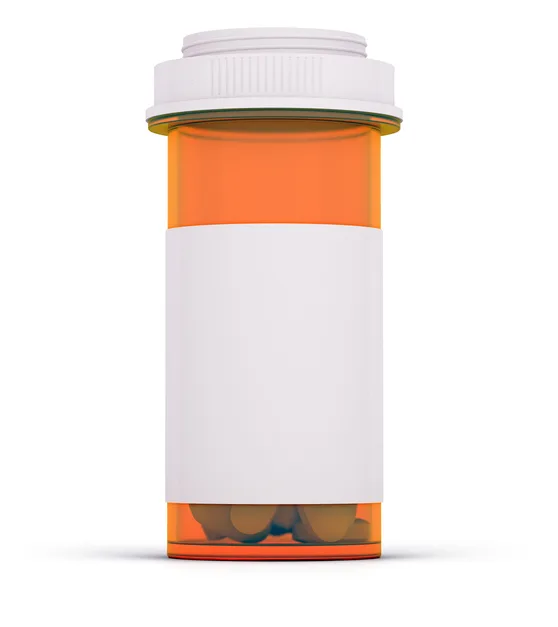How is Lyme disease treated?
Lyme disease is a bacterial infection that is treated with antibiotics. Treatment typically lasts 10 days to a few weeks, depending on the stage and severity of the infection.

Getty Images
Early Lyme disease is treated with a course of oral antibiotics. The antibiotics doxycycline, amoxicillin, and cefuroxime can all be used to treat Lyme disease. Doxycycline is also effective against some other tick-borne illnesses, including anaplasmosis, Borrelia miyamotoi disease (hard tick relapsing fever), and ehrlichiosis, though it is not effective against others like babesiosis (see Other Tick-Borne Diseases).
Later-stage Lyme disease can also be treated with oral antibiotics. For severe Lyme arthritis, Lyme carditis, and neurological Lyme disease, intravenous antibiotics are sometimes used.
Your doctor will select the antibiotic, dosage, method of delivery, and length of treatment based on a number of factors including your age, which symptom or symptoms you are experiencing, whether you’ve been diagnosed in an earlier or later stage of illness, symptom severity, and other medical conditions including other tick-borne infections.
“You need to find a practitioner that you have good communication with, who you feel has your best interests at heart, and will genuinely listen to your questions and concerns.”
Patient Experience Survey Respondent
Female, 43, Pearl River, NY
Potential side effects of treatment
Within 24 hours of beginning antibiotic treatment for Lyme disease at any stage you may experience a variety of symptoms including fever, chills, nausea and vomiting, headache, increased heart rate, low blood pressure, hyperventilation, flushing, and muscle aches and pain. Called a Jarisch-Herxheimer reaction, this phenomenon can occur in people infected with spirochetes (the type of spiral-shaped bacteria that cause Lyme disease) when they undergo antibiotic treatment. This reaction typically occurs within a few hours of starting the antibiotic and usually goes away within 24 hours.
Ask your doctor about side effects or precautions you should take based on the antibiotic you’ve been prescribed. For example, doxycycline can increase your sensitivity to the sun (photosensitivity). This means that you may burn more easily. It is best to avoid exposure to the sun when possible while on doxycycline. If you need to go outside, use sunscreen, a hat, or clothing that protects you from the sun.
All antibiotics can cause gastrointestinal side effects, especially when used for longer periods (see sidebar: Considerations for long-term antibiotic use, below). These include nausea, vomiting, abdominal pain, and diarrhea. Doxycycline may be more likely than other antibiotics to cause gastrointestinal symptoms. Take each dose of doxycycline with a large glass of water. Avoid taking this antibiotic with food, iron supplements, multivitamins, or pills or foods containing calcium, all of which can interfere with absorption of the medication. If you have mild gastrointestinal discomfort, your doctor may be able to suggest ways to minimize these side effects.
Antibiotics can also make you more susceptible to Clostridium difficile (C. diff), a rare but serious infection of the bowels that can cause diarrhea and abdominal pain and, in severe cases, can be life-threatening. Taking probiotics may help decrease the risk of C. diff.
What if I still don’t feel better?
Most cases of Lyme disease can be treated with a course of antibiotics. But some people continue to experience symptoms after that course of treatment.
As the CDC notes on their website, “the state of the science relating to the persistent symptoms associated with Lyme disease is limited, emerging, and unsettled. Additional research is needed to better understand how to treat, manage, and support people with persistent symptoms associated with Lyme disease.”
Currently available blood tests cannot determine whether a Lyme disease infection has cleared. That’s because Lyme disease antibodies — what diagnostic Lyme disease tests detect — continue to circulate in the bloodstream for months or even years.

Getty Images
After ruling out other potential causes of persistent symptoms, some doctors will shift the focus of treatment to managing symptoms, and usually do not prescribe additional antibiotics unless there are objective signs of persistent Lyme arthritis, meningitis, or neuropathy. Objective signs might include visible joint swelling or nerve damage confirmed through nerve function tests.
Other doctors might prescribe additional antibiotics to treat possible lingering infection — a potential but unconfirmed cause of persistent symptoms (see Persistent Symptoms of Lyme Disease). Long-term treatment may not be covered by your health insurance provider. (For information on what to do if your treatment isn’t covered, see Self-Advocacy.)
Talk to your doctor about the best protocol for you.
“You know if you are getting better or not. You know if you are being listened to or not. Trust your instincts.”
Patient Experience Survey Respondent
Male, 25, Kensington, MD
Considerations for long-term antibiotic use

If your doctor recommends a longer-term course of antibiotics, it’s important to ask about the risks and benefits. In addition to disruption of the gastrointestinal microbiome that can lead to C. diff, overuse of antibiotics can make them less effective against Lyme disease. This is known as antibiotic resistance.
Other treatments being studied
New treatments for Lyme disease are being studied, including the antibiotics vancomycin, azlocillin, dapsone, tetracycline, and hygromycin A. Some are in the laboratory research phase to determine if they are effective against the Lyme disease bacteria. Others are being studied in early-phase clinical trials in patients who have persistent symptoms after standard treatment.

Getty Images
Another treatment that is being studied is disulfiram (Antabuse), a drug otherwise used to treat alcoholism. Significant side effects have been reported with this treatment, however, and more studies are needed before it is recommended.
More research is needed on all of these antibiotics and medications.
A selective antibiotic for Lyme disease. Cell, 2021.
https://pubmed.ncbi.nlm.nih.gov/34619078/
Azlocillin can be the potential drug candidate against drug-tolerant Borrelia burgdorferi sensu stricto JLB31. Scientific Reports, 2020.
https://pubmed.ncbi.nlm.nih.gov/32123189/
Clinical Practice Guidelines by the Infectious Diseases Society of America (IDSA), American Academy of Neurology (AAN), and American College of Rheumatology (ACR): 2020 Guidelines for the Prevention, Diagnosis, and Treatment of Lyme Disease. Clinical Infectious Diseases, 2021.
https://academic.oup.com/cid/advance-article/doi/10.1093/cid/ciaa1215/6010652
Conquering Lyme Disease: Science Bridges the Great Divide. Columbia University Press, 2018.
https://www.columbia-lyme.org/conquering-lyme-disease-science-bridges-great-divide
Efficacy of Double-Dose Dapsone Combination Therapy in the Treatment of Chronic Lyme Disease/Post-Treatment Lyme Disease Syndrome (PTLDS) and Associated Co-infections: A Report of Three Cases and Retrospective Chart Review. Antibiotics, 2020.
https://pubmed.ncbi.nlm.nih.gov/33105645/
Erythema migrans rash. CDC website, March 2022.
https://www.cdc.gov/lyme/treatment/erythema-migrans-rash.html
How Can I Get Better? An Action Plan for Treating Resistant Lyme & Chronic Disease. St. Martin’s Griffin, 2017.
https://us.macmillan.com/books/9781250070548/howcanigetbetter
Identifying Vancomycin as an Effective Antibiotic for Killing Borrelia burgdorferi. Antimicrobial Agents and Chemotherapy, 2018.
https://pubmed.ncbi.nlm.nih.gov/30126963/
Lyme disease frequently asked questions (FAQ). CDC website, June 2022.
https://www.cdc.gov/lyme/faq/index.html
Potential Patient-Reported Toxicities with Disulfiram Treatment in Late Disseminated Lyme Disease. Frontiers in Medicine, 2020.
https://pubmed.ncbi.nlm.nih.gov/32373619/
The Jarisch-Herxheimer Reaction After Antibiotic Treatment of Spirochetal Infections: A Review of Recent Cases and Our Understanding of Pathogenesis. The American Journal of Tropical Medicine and Hygiene, 2017.
https://pubmed.ncbi.nlm.nih.gov/28077740/
Treatment of Lyme disease. CDC website, March 2022.
https://www.cdc.gov/lyme/treatment/index.html
